Key Summary
- Selling direct on Amazon gives beauty brands higher profit margins by eliminating the middleman, allowing them to reinvest into their business for growth. 💸
- Resellers tend to focus on bestsellers, potentially sidelining other products, which could clash with the brand's growth strategy. ⚖️
- Direct selling enables greater control over branding and visibility, while third-party sellers often struggle to allocate sufficient advertising funds due to tight margins. 📊
- Direct sellers can leverage Amazon's A10 algorithm to boost product rankings, optimizing sales history and other factors for greater exposure. 🔍
- The margin boost from direct selling offers more funds for advertising, helping brands remain competitive and increase their visibility. 🚀
- Relying heavily on third-party sellers or wholesale channels can limit growth opportunities and make a brand vulnerable to policy changes on platforms like Amazon. ⚠️
- Case studies show that focusing on long-term profitability through direct selling, like in the case of Advantage Solutions, helps ensure sustainability. 📈
- Packable's downfall demonstrates how over-reliance on a single platform (like Amazon) without strategic planning can lead to major setbacks. 📉
- Strategic decisions, such as Advantage Solutions’ sale of Quiverr, highlight the importance of adapting to real-time performance data to maintain profitability. 🔄
- Selling direct through Amazon not only offers financial benefits but also access to new customers, enhancing brand loyalty and fostering long-term growth. 👥
Beauty Brand Dilemma - To Wholesale or Sell Direct on Amazon
Many beauty brands choose to offload their products at wholesale prices to resellers who then market them on platforms like Amazon. However, this model presents certain obstacles that can potentially hinder profitability and growth. Here's a deeper look into the challenges:
- Concentrated Product Selection (aka Top Selling Products ONLY): Resellers typically concentrate on selling top-tier products or those with potential for scaling from each brand to counterbalance the diminished margins. While this tactic may favor the reseller, it might not harmonize with the brand's growth plans as it doesn't ensure equal visibility for all products.
- Advertising Vulnerability: With financial constraints, advertising is often the first expenditure to be trimmed. Consequently, your brand's exposure on these platforms dwindles, negatively affecting sales and growth.
- Limited Promotional Scope: The tight margins leave little room for promotional activities or participation in lucrative events such as Prime Day or the Turkey 5, thereby limiting opportunities to boost sales.
By the Numbers: Wholesale vs Direct
| 3rd Party | Brand Direct | ||||
| Retail Price | $50.00 | $50.00 | |||
| Expenses | |||||
| Amazon Fee (15%) | $7.50 | 15.00% | $7.50 | 15.00% | |
| FBA Fee | $5.40 | $5.40 | |||
| Shipping / Returns (5%) | $2.50 | 5.00% | $2.50 | 5.00% | |
| Advertising (variable) | $2.50 | 5.00% | $2.50 | 5.00% | |
| Total Expenses | $17.90 | $17.90 | |||
| Wholesale Cost | $27.50 | 55.00% | $32.10 | Brand Profit | |
| 3rd Party Profit | $4.60 |
For both 3rd Party (Wholesale) and Brand Direct, the retail price is $50.00.
3rd Party (Wholesale):
- Amazon Fee: $7.50 (which is 15% of the retail price)
- FBA Fee (Fulfillment by Amazon): $5.40
- Shipping/Returns: $2.50 (which is 5% of the retail price)
- Advertising: $2.50 (which is 5% of the retail price)
- Total Expenses: $17.90 (sum of Amazon Fee, FBA Fee, Shipping/Returns, and Advertising)
- Wholesale Cost: $27.50 (which is 55% of the retail price)
- 3rd Party Profit: $4.60 (This is calculated as Retail - Total Expenses - Wholesale Cost = $50 - $17.90 - $27.50 = $4.60)
Brand Direct:
- Amazon Fee: $7.50 (which is 15% of the retail price)
- FBA Fee: $5.40
- Shipping/Returns: $2.50 (which is 5% of the retail price)
- Advertising: $2.50 (which is 5% of the retail price)
- Total Expenses: $17.90 (sum of Amazon Fee, FBA Fee, Shipping/Returns, and Advertising)
- Brand Profit: $32.10 (This is calculated as Retail - Total Expenses = $50 - $17.90 = $32.10)
Analysis:
- Both 3rd Party (Wholesale) and Brand Direct have the same retail price and the same expenses associated with selling on Amazon.
- The main difference between the two is the Wholesale Cost. The 3rd Party has to purchase the product for $27.50, which greatly reduces their profit margin.
- The Brand Direct, presumably being the original manufacturer or brand owner, doesn't have this wholesale cost, leading to a higher profit.
- The 3rd Party's profit is significantly lower than the Brand Direct's profit due to the wholesale cost they have to account for.
- The note mentions that the 3rd Party does not have the margin to increase advertising spend to grow the brand. This implies that the 3rd Party's ability to expand and increase sales might be limited compared to the Brand Direct, which could potentially reinvest its higher profits into marketing and brand growth.
In conclusion, selling directly as a brand on Amazon yields a higher profit compared to a 3rd party seller, given the same retail price and expenses, primarily due to the absence of a wholesale cost for the brand. The 3rd Party's limited margin for advertising spend might hinder its growth potential compared to Brand Direct. The assumption that COGS remains the same for both means that this cost isn't a differentiating factor in their profit calculations.
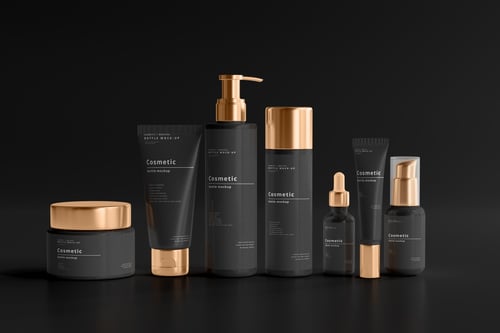
Why Beauty Brand Should be Selling Direct
Why should beauty brands take the direct route and partner with Amazon instead of opting for a third-party seller?
Here are compelling reasons that make this decision a game-changer for your brand's growth and profitability:
- Increased Margin: When you sell directly through Amazon, you eliminate the middleman, thereby increasing your profit margin. This additional revenue can be funneled back into your business to fuel further growth.
- More Advertising Dollars: A higher margin means more funds available for advertising. Advertising is crucial for brand visibility and reaching out to potential customers on these e-commerce platforms.
- Limited Advertising by 3rd Party Sellers: Third-party sellers often operate on tighter margins and may not have the necessary funds to invest heavily in advertising. This could limit the visibility and growth potential of your brand.
- Stay Competitive: Your competitors who are selling directly on Amazon are enjoying higher margins and consequently, have more money to spend on advertising. To stay competitive, it's essential for you to follow suit.
- Leverage Amazon's A10 Algorithm: Amazon's A10 algorithm prioritizes factors such as Amazon PPC relevance, sales history, organic sales, impressions, click-through rate, off-site sales, and external traffic. By selling directly, you can effectively optimize these factors to boost your product rankings and visibility.
Amazon as the Prime Avenue for Acquiring New-to-Brand Customers
Amazon's vast and diverse user base presents an unparalleled opportunity for brands to expand their reach and connect with a wider audience. This includes individuals who may not have had prior exposure to their products or services, opening up new avenues for growth and engagement.
By leveraging the expansive platform and tapping into the diverse customer base, brands can establish meaningful connections and cultivate long-term relationships with customers, ultimately driving success and increasing brand loyalty.
This access to new customer segments, combined with the platform's robust analytics and marketing tools, provides brands unique leverage to increase product visibility, drive sales and foster long-term customer relationships.
Private Equity is chasing the large top line sales but seems to ignoring profitability.
Private equity firms are known for their focus on driving top line sales and growth, often at the expense of profitability. This can be detrimental to brands that partner with these firms, as they may prioritize short-term gains over long-term sustainability.
One reason for this trend is the pressure from investors to show immediate returns on their investments. As a result, private equity firms may push for aggressive growth strategies and high sales volumes, even if it leads to lower margins.
In contrast, partnering with Amazon allows brands to focus on sustainable growth and long-term profitability. By selling directly through Amazon, brands have more control over their pricing, margins, and advertising spend. This allows them to make strategic decisions that align with their brand's objectives and vision.
Moreover, the competition on Amazon is fierce, and brands must consistently innovate and optimize to stay ahead. This focus on continuous improvement can be beneficial for the brand's long-term success, as it encourages a growth mindset and a commitment to staying competitive.
Case Study #1: The Rise and Fall of Packable: Lessons for E-commerce Businesses
Packable, the parent company of Pharmapacks, once stood as a beacon of e-commerce success. However, recent events have led to the company's downfall, providing critical lessons for businesses aiming for growth and profitability on Amazon and Walmart.
The Success Story
Pharmapacks was the No. 1 Amazon seller in the U.S. in September 2022 (according to Marketplace Pulse), an achievement that many businesses strive for. This success was largely due to their focus on selling health, personal care, and beauty products, sectors with significant demand.
The Downfall
Regrettably, Packable now ranks fifth among Amazon's top sellers nationwide. The company is laying off approximately 20% of its staff, with the remaining 372 employees expected to be terminated. Packable is shutting down its operations, liquidating remaining collateral, and winding up the business.
Despite securing funding from high-profile investors such as Carlyle Group, Fidelity, and Lugard Road Capital, Packable failed to secure new financing.
The Overreliance on Amazon
In 2020, Amazon accounted for 80% of Packable's sales, making it the largest channel for the company. This over-reliance on a single platform can be risky, as any changes in the platform's policies or market conditions can have a significant impact on the business.
The Cancelled SPAC Deal
Packable had announced plans to merge with a SPAC but later called off the deal due to unfavorable market conditions This illustrates the importance of having a robust and flexible business strategy.
Leadership Changes and Growth Challenges
In April, Packable CEO Andrew Vagenas resigned, and Daniel Myers succeeded him. While leadership changes are common in businesses, it's crucial these transitions are smooth to maintain company stability and growth.
Despite supply chain constraints slowing revenue growth in 2021, Packable was still able to grow in early 2022. This shows that even in challenging times, businesses can find ways to adapt and succeed.
Key Takeaways
Packable's story serves as a reminder for e-commerce businesses of the importance of diversification, strategic planning, and effective leadership. By understanding these lessons, your business can effectively navigate the complexities of selling on Amazon and Walmart, ultimately achieving sustainable growth and profitability.

Case Study #2: Advantage Solutions Sells Quiverr to Recom Commerce in 2023
Advantage Solutions, a leading provider of sales and marketing services, made a strategic decision in 2023 that demonstrates their commitment to optimizing profitability and enhancing business growth. They sold Quiverr, an Amazon retailer they had previously acquired, to Recom Commerce. This move was driven by the realization that the margins from Quiverr were not as expected.
The Acquisition of Quiverr
Advantage Solutions initially acquired Quiverr with the intent to strengthen their e-commerce capabilities. Quiverr, a top-rated Amazon retailer and Platinum Seller, brought valuable expertise to Advantage's portfolio. However, business is about adapting to realities and making tough decisions.
Realizing the Reality
Post-acquisition, Advantage Solutions found that the margins from Quiverr were not as anticipated. This realization led them to reconsider the value of holding onto Quiverr. Profitability is key in any business venture, and maintaining operations that do not contribute to this goal can be detrimental.
The Sale to Recom Commerce
Understanding the need for change, Advantage Solutions made the strategic decision to sell Quiverr to Recom Commerce in 2023. Recom Commerce, a global leader in e-commerce solutions, was a fitting acquirer given their experience and focus in the industry.
Key Takeaways
This development serves as a reminder that businesses must always be ready to pivot and make strategic decisions based on real-time performance data. Whether it's buying or selling a subsidiary, these decisions can be crucial for maintaining profitability and driving growth.
Amazon Direct vs Wholesale - Frequently Asked Questions.
Why should a beauty brand opt for direct selling instead of resorting to a 3rd party Amazon wholesaler?
Direct selling eliminates the need for a middleman, hence increasing your profit margins. With this additional revenue, a brand can invest back into the business for further growth. Also, direct selling paves the way for more visibility and control over the brand's representation on Amazon.
How does direct selling impact the advertising budget for a beauty brand?
Higher profit margins from direct selling mean more funds available for advertising. This is crucial as advertising plays a vital role in brand visibility and reaching out to potential customers on e-commerce platforms. Third-party sellers, operating on tighter margins, might lack sufficient funds for extensive advertising, limiting a brand's growth potential.
How can selling directly on Amazon help a beauty brand gain a competitive edge?
By selling directly on Amazon, brands enjoy higher margins and, consequently, have a larger budget for advertising. This allows them to stay competitive in the marketplace. Furthermore, direct selling enables brands to effectively leverage Amazon's A10 algorithm, optimizing factors like Amazon PPC, sales history, and organic sales to boost product rankings and visibility.
Summary
In today's competitive e-commerce landscape, achieving sustainable growth and profitability is key for long-term success. Partnering with Amazon allows businesses to have more control over pricing, margins, and advertising spend. However, companies must also be mindful of over-reliance on a single platform and the need for strategic planning and effective leadership.
The e-commerce sector is highly dynamic, and achieving long-term success demands a keen understanding of market trends, effective leadership, and strategic decision-making. Two compelling case studies, Packable and Advantage Solutions, provide valuable insights into the complexities of navigating the e-commerce landscape.
Packable's decline, despite being a top seller on Amazon, underscores the risks of over-reliance on a single platform, while Advantage Solutions' decision to sell Quiverr highlights the need for businesses to be adaptable and make strategic decisions based on real-time data.
In such a challenging environment, beBOLD can play a pivotal role. Our tailored strategies and in-depth market insights can help businesses build a more diversified portfolio, effectively manage their operations, and make informed decisions, ensuring sustainable growth and profitability.
Our dedicated team can provide the much-needed guidance to navigate the complexities of the e-commerce sector, thus empowering businesses to be bold and innovative in their approach.


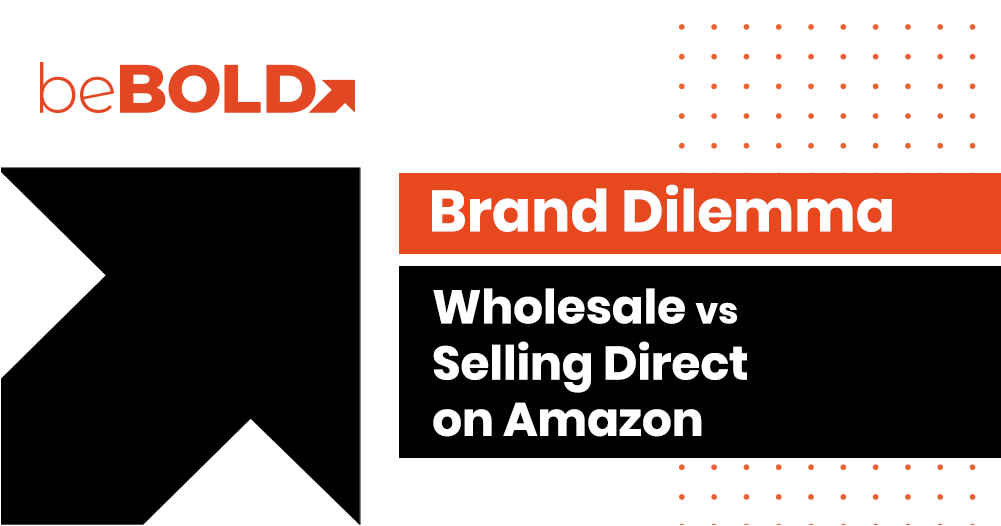
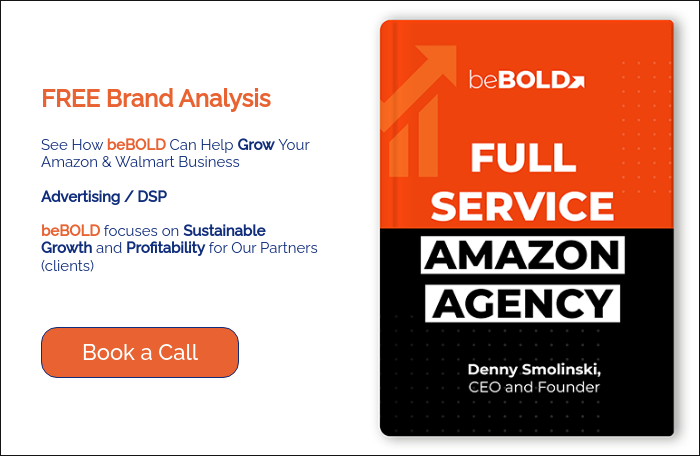



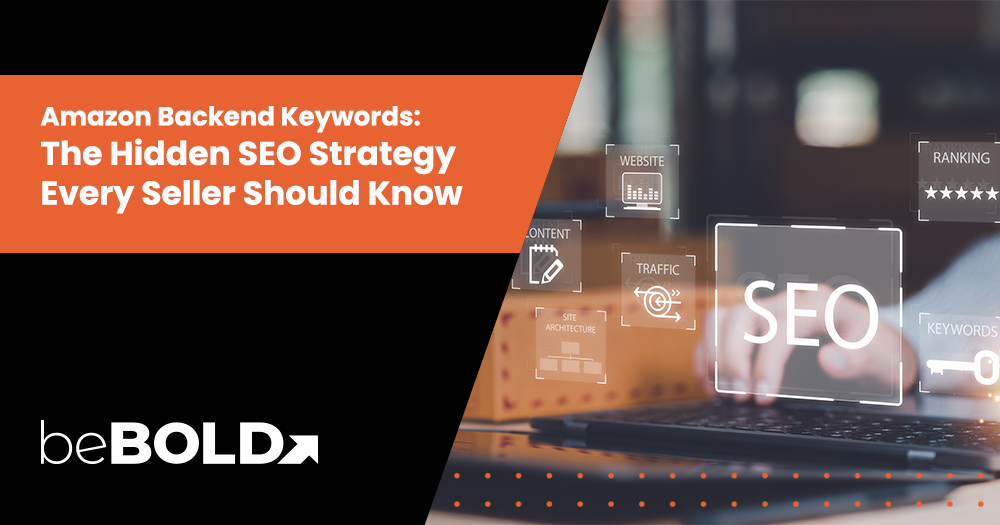
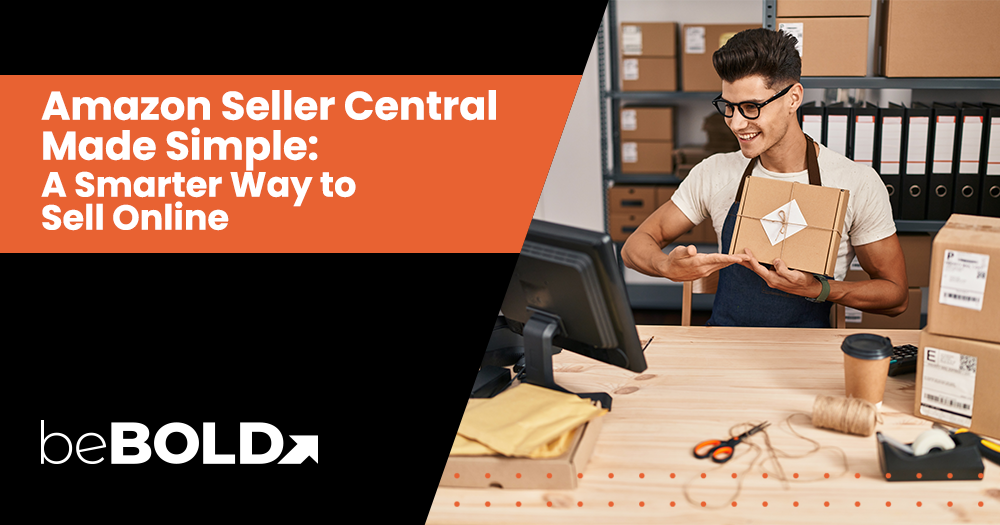
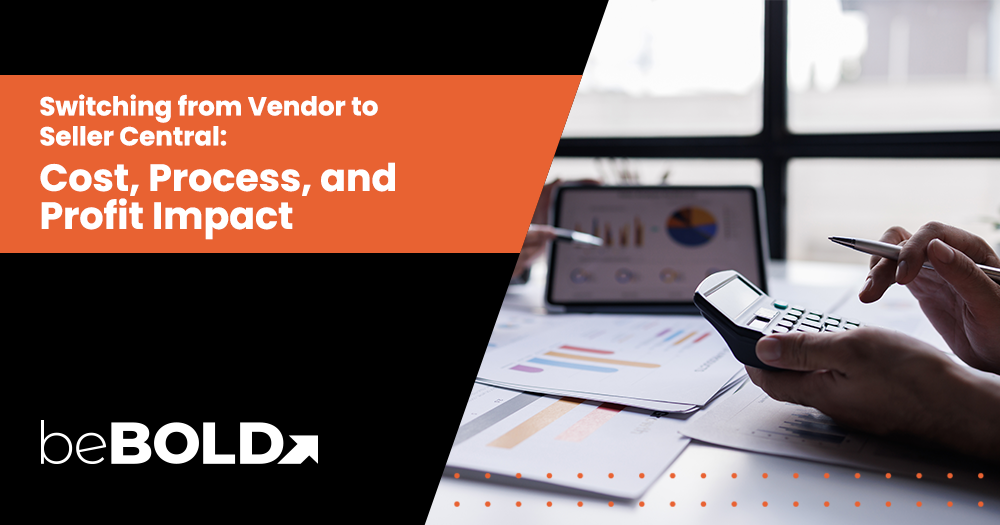
Comments